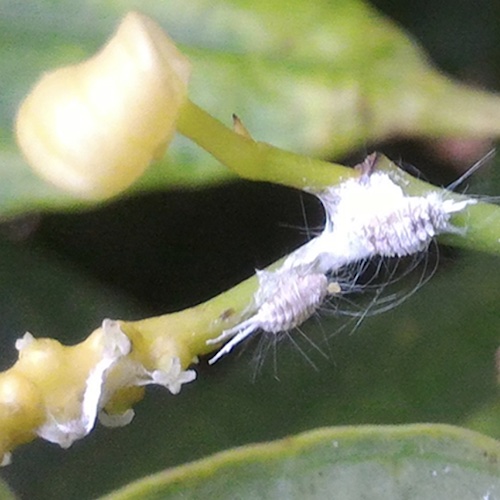
Knowledge Hub
Planococcus spp (Mealybug)

Scientific name
Planococcus spp
Common name
Mealybug
Symptom
- Harmful parts: buds, fruits, young buds, underside of leaves. These parts can not grow, become dry, fall off
- Secretion of sweet nectar causes soot fungus to grow, affecting photosynthesis
- Sucking underground stems and roots, making a wound for the fungus to enter and rot the roots. When it's heavy, there are usually big galls
Distribution
- Young bugs move very quickly. The larger bug, the slower it moves
- Mealy bugs secrete wastes that serves as food for many ants to spread pests
- Mealy bugs are also spread through rainwater, irrigation water, and working tools
Prevention and Control
Cultivation measures
- Inspect the garden regularly for early detection and control Mealy bugs
- Limit planting black pepper on severely damaged areas by Mealy bugs
- Cut off branches close to the ground, clean the field
- Cut off branches heavily affected by Mealy bugs, uproot and burn plants severely infected with Mealy bugs
Biological measures
- Maintain natural enemies such as: red ladybugs, black ants, parasitic wasps, flies
- Only spray plants having aphids when necessary with active ingredients such as: Matrine (extract from gentian) or Rotenone
Search
Activities
Downloads
© 2024 Safer Spice. All rights reserved.

 BACKGROUND
BACKGROUND



